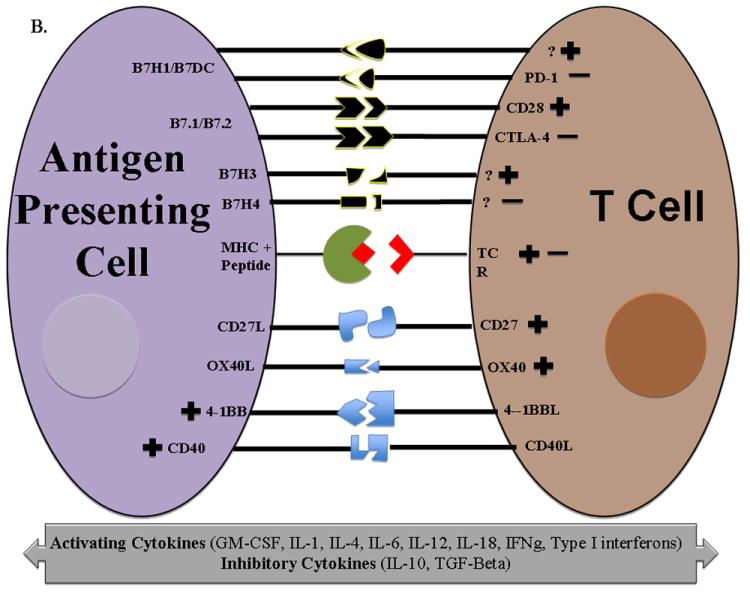Figure 1.


A. TAAs are expressed as small peptide fragments on HLA molecules and presented to T cells for recognition and activation and is referred to as T cell signal 1. However, tumor cells cannot effectively activate T cells alone because they do not express the co-stimulatory molecules such as B7.1 and B7.2 which provide signal 2. Vaccines are designed to deliver TAAs to antigen presenting cells which naturally upregulate both signal 1 and signal 2. Dendritic cells are the most efficient antigen presenting cells due to their ability to readily process tumor antigen and present them on both MHC I and II surface molecules which then bind to T cell receptors on both CD4+ and CD8+ T cells. DCs also upregulate B7-1/B7-2 expression (signal 2) for efficient T cell activation. Members of immune regulatory cell surface receptors on T cells such as CTLA-4 turn off activated T cells by competing with activating receptors (signal 2) for the same ligand, allowing the tumor to evade immune recognition. Cytokines produced by T cells mediate both activating and inhibitory immune responses. B. Examples of different family members of both co-stimulatory and inhibitory signals on antigen presenting cells that interact with T cells. TCR = T cell receptor MHC = Major histocompatibility complex
